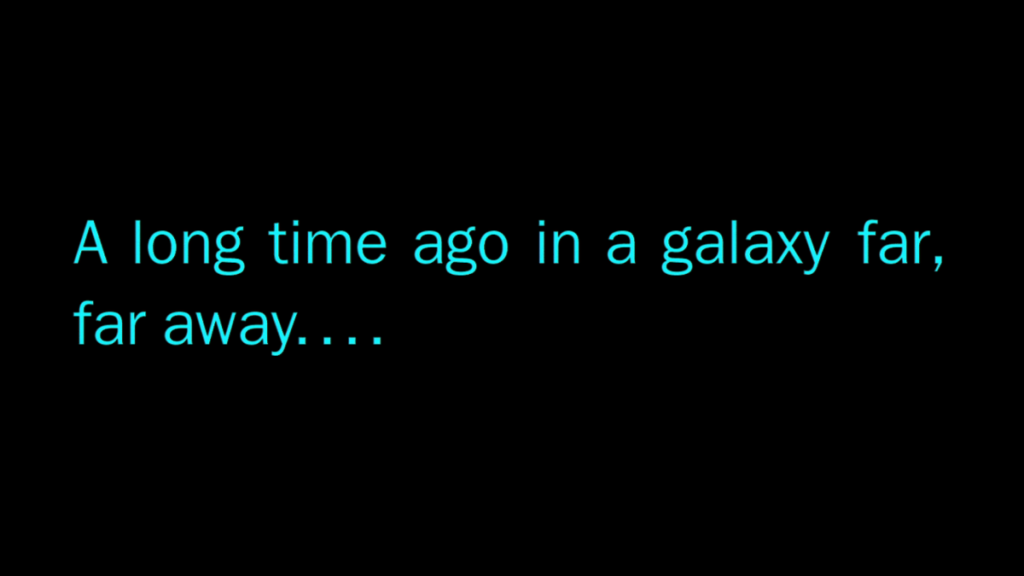How do you start a sci-fi story or novel?
This is a common question among aspiring science fiction writers, and with good reason. After all, you can’t reach the finish line until you take your first steps.
The truth is, you can start your science fiction story however you want, as long as it engages the reader.

Some sci-fi stories start after the climax and shift into flashback mode. Some follow the more traditional route: exposition, rising action, climax and resolution. Some start with a bang … others a slow burn.
But again, the goal is to keep the reader turning pages. And the only way to do that is by connecting with your readers on an emotional level. You have to pique their curiosity and engage their sense of wonder. You have to hook them.
- So maybe the question isn’t: How do I start a sci-fi story?
- Maybe you should be asking: How do I captivate and engage readers from page one?
Let’s look at some of the ways you might pursue this goal, within your science fiction writing.
The Plotting vs. Pantsing Decision
You might start your story with the ending in mind and proceed forward in a pre-planned, outlined sort of way. Or, if you’re like me, you might prefer to start with an interesting situation and let things unfold naturally. Different strokes for different folks.
This is what people refer to as the plotting versus pantsing dilemma.
- Plotting: You could start your sci-fi story or novel with a clear outline in mind, developing scenes in accordance with some master plan.
- Pantsing: You could also start with a general idea of the story and let it evolve naturally as you go along.
My advice is to choose a method that (A) gets you excited and (B) helps you reach the finish line.
If you need a detailed outline on paper before you can start your science fiction story, then by all means plot away. On the other hand, if you’d rather see the story develop naturally — maybe with some pleasant surprises along the way — pantsing might be the better approach.
Or maybe you’ll take a “hybrid” approach, starting your sci-fi story or novel with a loose and flexible outline that allows for creative detours.
I prefer “situational writing” myself, which is a twist on the pantsing method. You start with an interesting situation (i.e., the character doing something). Then you move forward, establishing the mood of the story, developing the characters, etc.
And you ask yourself: What next? What would this character do in this situation, and how might that complicate things? What conflicts would arise? Thus the story moves forward, propelled by the strength of the situation.
I like to start a novel this way, because it keeps me interested in both the process and the story. But that’s just me. You have to find something that works for you — something that gets you fired up and ready to write.
Prerequisites: Character, Setting and Conflict
You don’t have to know every plot point, scene or twist just to begin a sci-fi story. As mentioned above, it’s okay to figure things out as you go along. In fact, some writers get better results with that approach.

But there are a few key elements you should have in mind, before starting a science fiction story or novel. Having a firm grasp on these three elements will make it a lot easier to tell your story. If you lack them, on the other hand, you might find yourself sputtering along without any sense of direction or purpose.
At a minimum, you’ll want to have the following elements in place:
- Character — Before you start your science fiction story or novel, you should understand (A) who your main character is and (B) what they want. In the first Star Wars movie, Luke Skywalker was a good-hearted farm boy who wanted to trade his boring life for the adventure of fighting the Empire. So we have a character and a “want.” Who is your protagonist, and what does he or she want?
- Setting — When and where does your story take place? When it comes to science fiction, you have a lot of options here. You could use an existing location or create your own world. You could set your story in the present, the near future, or two thousand years from now. But you need some sense of the setting and time period, in order to start a sci-fi story. And feel free to adjust it as needed, as you work your way through the chapters.
- Conflict — Most science fiction stories and novels contain some kind of conflict between opposing forces. This conflict should involve your protagonist. There are different types of conflict in fiction: person versus society, person versus the elements, person versus person, person versus … anything. Conflict creates drama, which in turn engages the reader. Your story might have one type of conflict or several, as long as it’s present.
The point is, you need to have a few story elements in mind before you start a science fiction story or novel. You don’t have to see the entire storyline or have it outlined on paper. You can figure some things out along the way. But you do need to understand your protagonist, the world where your story takes place, and the major obstacle or conflict your protagonist will face.
7 Ways to Start a Sci-Fi Story
We’ve talked about some of the preliminary steps you should take, before you start your sci-fi story or novel. Now, let’s get to the fun stuff. Let’s look at some actual examples of how you might begin your science fiction tale…

1. It was just another ordinary day, until…
It was just another routine scavenge run, like the dozens before it, until the ship’s receiver picked up a faint signal from the outer reaches.
And just like that, a science fiction story is born.
This is a popular way to start a sci-fi story or novel. It gives you time to introduce the main character and the setting, before the inciting incident occurs. (The inciting incident is what puts your characters on the path they’ll follow for the rest of the story.)
2. I’ve been chosen to do what?
Congratulations, space cadet. You’ve been handpicked to go on a top-secret mission to…
I call this the “chosen one” model. It’s another great way to start a sci-fi story, and for several reasons.
Here again, we get to know the main character(s) a bit before the inciting incident takes place. Only this time, the inciting incident is something beyond the protagonist’s control. They’ve been chosen for a mission … or a job … or a quest … or something that gets the story off and running.
3. Madam President, we have a situation
Madam President, we’ve received reports from NORAD about a mysterious craft entering our airspace. No ma’am, we don’t believe it’s a military craft. At least, not one from this planet. For starters, it’s the size of Rhode Island.
Now here’s a fun and engaging way to start a science fiction story / novel. You kick things off with a person of authority being briefed about a strange and unusual occurrence. It might be a signal from space, a space mission gone wrong, a mysterious craft, or a complete reversal of the seasons. Let your imagination roam.
But again, you need to know who your character is, and how they fit into all of this. (See the “perquisites” section above.) In the example above, the protagonist could be the president; the person briefing her; or a background figure who will eventually take center stage, like an analyst, expert or advisor.
4. A man or woman on a mission
In The Martian, by Andy Weir, a group of astronauts are on a somewhat routine research mission to Mars … when things go horribly wrong. In the 1979 sci-fi classic Alien, the crew of a commercial towing vessel are returning to Earth … when things go horribly wrong.
Can’t decide how to start your sci-fi story? Try giving your main character a mission. Put them on another planet or out in space. And then create problems for them.
The pattern here is similar to some of the other examples. In fact, this method closely resembles method #1 above. You start by introducing character and setting — the time and place, the mission, etc. Then something goes wrong and boom, you’ve got your inciting incident.
5. A description of the story’s setting or place
You could also start your science fiction story by describing the setting. Maybe the story takes place on a generation ship. Maybe it takes place in a habitat on Mars, or a ridge at the bottom of the ocean.
In these scenarios, you might begin your story by bringing the reader into the location.
Here’s how Peter Watts does it, at the beginning of his 2014 novel Starfish:
The abyss should shut you up.
Sunlight hasn’t touched these waters for a million years. Atmospheres accumulate by the hundreds here, the trenches could swallow a dozen Everests without burping. They say life itself got started in the deep sea. Maybe. It can’t have been an easy birth, judging by the life that remains—monstrous things, twisted into nightmare shapes by lightless pressure and sheer chronic starvation.
Even here, inside the hull, the abyss weighs on you like the vault of a cathedral. It’s no place for trivial loudmouth bullshit. If you speak at all, you keep it down. But these tourists just don’t seem to give a shit.
From there, the story shifts into “just-another-routine-mission” mode, with a guy piloting a submersible vessel into the deep for a group of tourists.
Just don’t spend too much time on the setting, before introducing your characters. Stories need people. In the Starfish excerpt above, the author introduced one of the characters in the very next paragraph.
6. The protagonist is trapped, stranded, deserted or isolated
Here’s another interesting way to start a sci-fi story. With this approach, you’re isolating the main character at the beginning of the story. Maybe the protagonist is stranded on a derelict spacecraft somewhere. Maybe she’s trapped in some mysterious locale, all alone and cut off from help.
Sort of a science fiction twist on Castaway.
With this approach, we get to know the protagonist really well, because he/she is the only character in the story at this point. From there, you could broaden the story by introducing more characters, or by revealing why this person is stranded / trapped / deserted. Betrayal? Attempted murder? Who knows!
Regardless of how it plays out, it’s an intriguing way to start a science fiction novel or story. It also allows you to create a lot of problem-solving scenes, as in The Martian.
7. The protagonist suffers from temporary amnesia
A sci-fi take on The Bourne Identity? Why not?
In the above-named film, protagonist Jason Bourne starts off with no memory of who he is. But as time goes on, he starts to realize he has a very particular set of skills. (Like hand-to-hand combat and firearms.) He also starts to realize there are people out there who want him dead.
The temporary amnesia premise could also be used to start a science fiction story. In fact, you might even combine it with story starter #6 above. Maybe your main character wakes on an alien planet with no recollection of how she got there. It’s a mystery wrapped in a sci-fi tale.
You Have Endless Ways to Start a Science Fiction Story or Novel
I’ve given you some story starter examples above. But this list only scratches the surface. There are countless ways to start a sci-fi story or novel. It’s a blank slate waiting to be filled.
Here’s an idea. Take a trip to the nearest public library and visit the science fiction section. Pull down a dozen or so books and skim through their first chapters. How did those authors start their stories? Which ones did you find the most engaging, and why?
If you have an e-reader, like a Kindle or Nook, you could do this from the comfort of your own home. Seek out some of the most famous science fiction novels and download samples. You’ll get a master class in how to start a sci-fi story!
